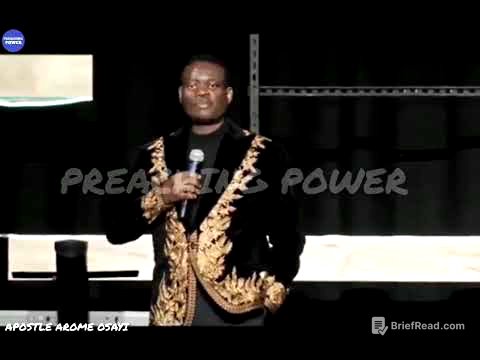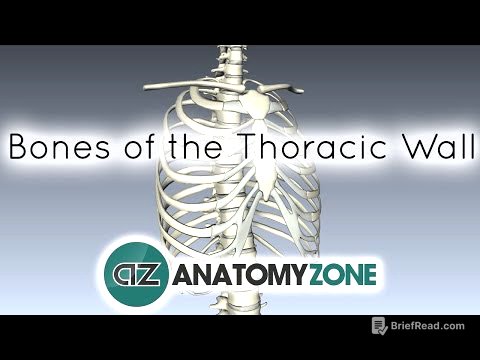TLDR;
This lecture discusses the integration of complimentary therapies into sports rehabilitation programs. It highlights the need for a holistic, integrated approach to healing that considers the mind, body, and energy of the individual. Key points include the benefits of complimentary therapies in accelerating healing, managing pain, and addressing mental aspects of recovery, as well as practical implementation strategies and a case study.
- Complimentary therapies enhance traditional rehabilitation by addressing physical and mental well-being.
- Techniques like acupuncture, massage therapy, chiropractic care, nutrition, and mindfulness play crucial roles.
- Successful integration requires scientific knowledge, evidence-based practices, and a team approach involving athletes and coaches.
Introduction: Integrating Complimentary Therapies in Sports Rehabilitation [0:15]
The lecture begins by introducing the concept of integrating various complimentary therapies into a sports rehabilitation program for a holistic and early return to sports. It addresses the changing paradigm in sports rehabilitation, moving towards more data-driven, integrated, and holistic treatment approaches. These approaches use modalities like manual therapy, exercise therapy, and electrotherapic modalities, focusing not only on physical healing but also on the mind, body, and energy of the individual.
Benefits of Integrating Complimentary Therapies [3:30]
Integrating complimentary therapies into traditional sports rehabilitation offers a multi-dimensional approach, accelerating healing and reducing recovery time. It improves pain management, reduces medication dependency, and addresses both physical and mental aspects of recovery, which is particularly important for athletes. Common therapies include acupuncture, dry needling, massage therapy, myofascial release, chiropractic care, nutrition, supplements, and mindfulness techniques.
Acupuncture and Dry Needling [4:52]
Acupuncture, an ancient Chinese medicine modality, works on the energy principle along the body's meridians, using needles to reset energy balance. It is generally used in pain management, inflammation reduction, and muscle tension relief, with accumulating research supporting its utility in musculoskeletal conditions. Dry needling, a western approach, focuses on myofascial tight bands or trigger points, stimulating muscle twitches and resetting tone, useful in myofascial pain, tendinopathy, and postsurgical conditions, complemented by manual and exercise therapy.
Massage Therapy and Chiropractic Care [6:16]
Massage therapy enhances tissue recovery through soft tissue manipulation, promoting circulation and relaxing muscles. Techniques include deep tissue, sports massage, and trigger point therapy, effective in reducing muscle soreness and enhancing mobility, used both as a recovery and injury prevention tool. Chiropractic care, a manual therapy, focuses on restoring joint alignment, particularly spinal alignment, to enhance nervous system function, improve posture, reduce pain, and increase range of motion, treating musculoskeletal injuries, back pain, and headaches, complemented by movement drills and muscle re-education programs.
Nutrition Therapy and Aquatic Therapy [7:54]
Nutrition therapy is essential for optimal healing, ensuring the body is fueled correctly, especially post-injury. A balanced diet supports tissue repair, inflammation control, and energy restoration, with key nutrients including protein, antioxidants, omega-3 fatty acids, vitamins D and C, and hydration. Aquatic therapy facilitates functional recovery and allows therapeutic exercises in a three-dimensional, reduced-stress environment, beneficial for various populations from neurological to orthopedic patients, with immersion depth determining joint stress.
Mindfulness and Relaxation Techniques [11:29]
Mindfulness and relaxation techniques are crucial in an integrated sports rehabilitation approach, addressing stress and anxiety related to return to play and career impact. Techniques like meditation, deep breathing, progressive muscle relaxation, and yoga nidra promote mind-body connection, reduce stress, improve sleep quality, enhance focus, and manage mood.
Integrating Complimentary Therapies into Rehabilitation Programs [13:54]
Strategic integration of complimentary therapies requires scientific knowledge, evidence, clinical judgment, and discussion with the athlete and coach. Needling techniques are combined with exercise or manual therapies to reduce muscle tension and pain or facilitate tissue repair and relaxation. Massage therapy enhances tissue flexibility and blood flow post-exercise, reducing soreness and preventing injuries. Relaxation techniques, integrated through periodized mental training, improve confidence, reduce anxiety, and enhance adherence to rehab programs.
Case Study: Rea, the Volleyball Player [17:27]
The lecture presents a case study of Rea, a volleyball player with a year-long elbow injury and forearm stiffness. Analysis includes assessing sport demands (overhead nature), impairments (range of motion, joint structure, soft tissue), and potential causes. Integrating complimentary therapies involves addressing pain modulation with dry needling and soft tissue release, using electrotherapy modalities like TENS and ultrasound, and implementing therapeutic exercises to restore range of motion and strength. Progressive muscle relaxation, aquatic therapy, and nutrition therapy are also considered to address mind-body connection and healing.
Best Practices and Conclusion [29:52]
Best practices for integrating complimentary therapies include staying updated with evidence-based information, capacity building through training, and tailoring therapy to individual needs and rehab phases. The lecture concludes that a changing paradigm in sports rehabilitation requires an inclusive, multimodal, data-driven, and holistic approach for better outcomes, based on scientific rationale, evidence, patient needs, clinical judgment, and a team approach.









